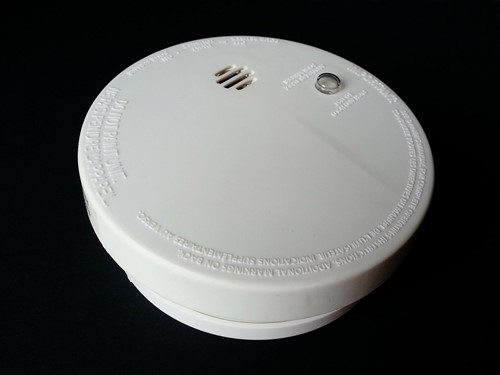
Carbon monoxide leaks are an emergency situation. Gas stoves, dryers, furnaces, wood-burning fireplaces and other gas or flame-ignited appliances are all potential sources of carbon monoxide leaks. Carbon monoxide poisoning causes headaches, nausea and other symptoms, which can turn into a life-threatening emergency with continued exposure to this gas. But don't fret.
Carbon monoxide detectors can provide you with an immediate alert when a leak is detected, allowing you and your household to get to safety outside as soon as possible. Keep the following tips in mind when placing carbon monoxide detectors for the best protection possible.
Carbon monoxide detectors work best when you place them roughly five feet above floors. Putting them too low might cause them to be less effective at detecting carbon monoxide leaks, since carbon monoxide is lighter than air. You can put carbon monoxide detectors on ceilings if you don't have a good spot to put them on the wall.
Putting carbon monoxide detectors too close to flame sources could cause them to go off when there is no carbon monoxide leak. Keep these detectors away from fireplaces and any flame-producing appliances, such as gas stoves.
Carbon monoxide detectors should be kept out of the reach of kids and pets, so they don't play with them or accidentally set them off by pressing buttons. Keeping detectors out of reach also protects them from damage.
Each floor in your home should have at least one carbon monoxide detector, which helps ensure, no matter where a leak is occurring, the nearest carbon monoxide detector will detect it and alert you and your household.
Carbon monoxide leaks can occur during the night when you and your household are sound asleep. Having a carbon monoxide detector near sleeping areas in your home helps ensure you and yours will wake up via the alert in the middle of the night, so you can get to safety.
Check your carbon monoxide detectors regularly, such as once a week, to make sure they're working. Replace the batteries in these detectors every year to keep them working properly.

My name is Kevin Durkin, and I have been a Realtor in the Merrimack valley for the past 23 years. I have helped people in this community realize their dreams by not only purchasing their first homes, but also helping them find the right place to suit their needs no matter what phase of their lives they find themselves in.